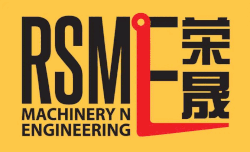Introduction
Forklifts and telehandlers are essential machines in material handling, construction, and industrial operations. Whether it's moving pallets in a warehouse or lifting materials on a construction site, the right choice can greatly improve efficiency and safety. In this blog, we'll cover the major characteristics of forklifts, telehandlers, and special machines like the Lull forklift to help you determine the best fit for your needs.

What is a Forklift?
A forklift is a small, versatile machine employed for material handling in several different applications, such as lifting and moving loads over short distances. They are very common in most warehouses, manufacturing plants, and distribution centers. Forklifts vary in type and configuration to suit specific applications.
Key Features of Forklifts:
Lifting Capacity: It ranges from 1 to 10 tonnes depending on the model.
Compact Design: Best suited for indoor applications operating in narrow aisles and confined spaces.
Fuel Options: Electric, diesel, or LPG-powered. The electric forklift finds extensive application in indoor operations due to zero emissions.
Ease of Use: Easy to use and with great maneuverability.
Common Applications:
Shifting pallets and goods around a warehouse
Loading/unloading trucks
Stacking materials at manufacturing facilities
What is a Telehandler?
A telehandler, also known as a telescopic handler, is a robust and more versatile machine, designed for lifting heavy materials to greater heights and distances. Unlike forklifts, a telehandler is fitted with an extendable boom that reaches forwards and upwards, making it especially useful on construction sites, farms, and industrial yards.
Key Features of Telehandlers:
Extended Reach: The telescopic boom allows for both vertical and horizontal lifting, reaching heights of 6 to 20 metres.
Higher Load Capacity: It can lift heavy materials like bricks, steel beams, and supplies for construction.
Rough Terrain Capability: Big rough tyres and four-wheel drive enable them to do well on uneven surfaces.
Multi-Purpose Attachments: They can be fitted with forks, buckets, or lifting hooks to increase their versatility.
Common Applications:
Material lifting on building sites.
Farm work, like moving bales of hay.
Loading and unloading outdoors in yards and ports.
What Is a Lull Forklift?
The Lull forklift is a special type of telehandler mainly used for precision and quick maneuverability in lifting operations. Sold under the "Lull" brand, these machines have a special sliding boom that allows operators to place loads accurately without having to reposition the machine.
Key Benefits of Lull Forklifts:
More Reach and Control: Sliding boom provides accurate placement for loads, ideal for tight or elevated areas.
Rough Terrain Performance: Built for rough ground, the forklifts of Lull are quite popular on construction sites.
Heavy Load Handling: It can handle heavy materials to high levels.
Common Applications:
Construction projects involving the placement of materials with accuracy
Heavy loads to be moved on rough outdoor ground
Pallets and building material to be lifted to higher floors or platforms.
Forklift vs. Telehandler: Which to Choose?
When it comes to choosing between a forklift and a telehandler, you may want to consider the following factors:
Height and Reach:
Choose a forklift for low to medium-height lifting in warehouses or factories. In cases where extended reach for high or hard-to-reach areas is needed, a telehandler is more appropriate. Terrain: Forklifts work best on smooth, level surfaces like warehouse floors. Telehandlers are designed for rough or uneven terrain, making them ideal for construction and agriculture. Load Type: Forklifts are suited for pallets and uniform loads. Telehandlers can accommodate heavier and more varied materials with the use of attachments. Precision:
A Lull forklift with a sliding boom allows for great control over placing a load precisely, especially in rough areas. Conclusion Both forklifts and telehandlers are important when it comes to material handling, but their applications vary depending on reach, terrain, and load requirements. While forklifts are ideal for indoor and compact spaces, telehandlers, including the specialized models like the Lull forklift, perform well in outdoor and heavy-duty tasks.
These differences explained will assist in the choice of proper equipment, which shall enhance productivity, safety, and efficiency in your operations.

Comments